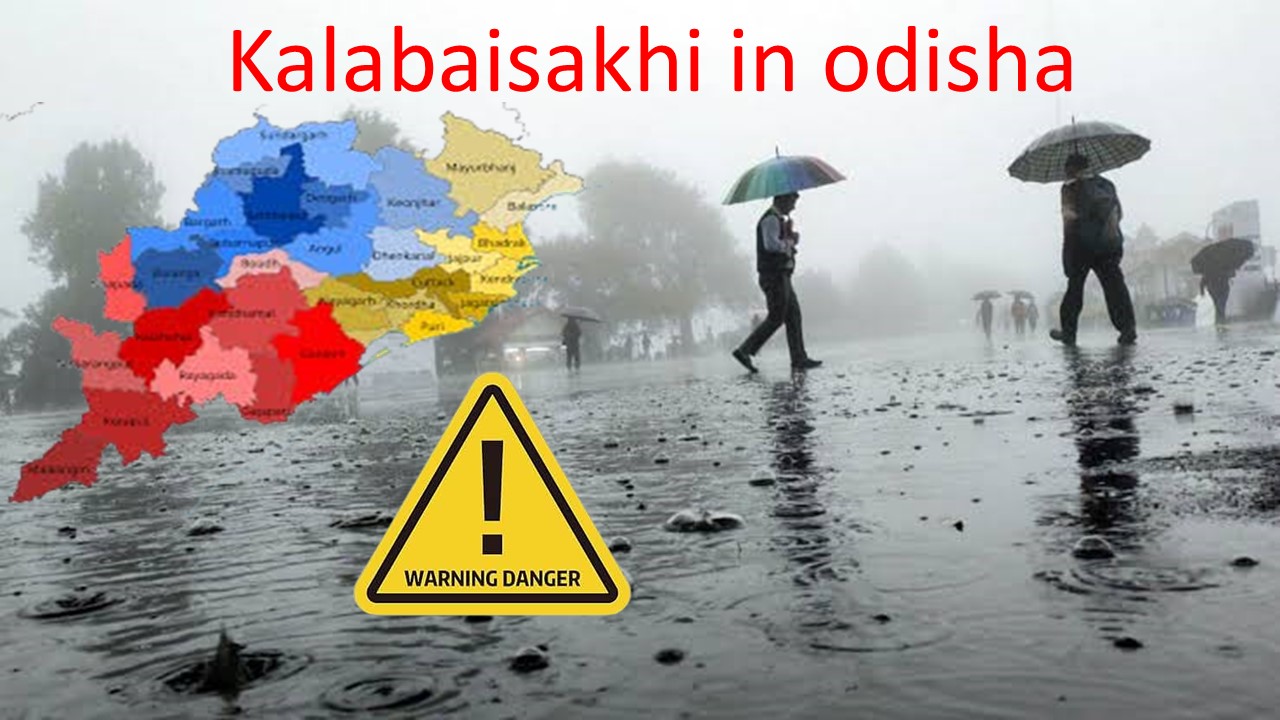
Kalabaisakhi Alert: Odisha Braces for Thunderstorms Across 17 Districts
The India Meteorological Department (IMD) has issued a Kalabaisakhi (Nor’wester) alert for several districts in Odisha, including Bhubaneswar, for the period of May 16 to May 22, 2025. These storms are characterized by sudden thunderstorms, lightning, gusty winds, and occasional hailstorms, typically occurring in the late afternoon or evening.
Affected Districts
The IMD has placed multiple districts under yellow and orange warnings due to anticipated severe weather conditions. While specific district names are not listed in the available sources, the alerts indicate widespread impact across the state. Residents in Bhubaneswar and surrounding areas should remain vigilant and adhere to safety advisories.
Weather Outlook for Bhubaneswar
Bhubaneswar is expected to experience thunderstorms and rainfall during this period, with temperatures hovering between 32°C and 36°C. These weather conditions could potentially cause interruptions to routine activities, such as commuting and outdoor gatherings.
Safety Measures During Kalabaisakhi
To stay protected during Kalabaisakhi storms:
- Remain Indoors: Refrain from stepping outside while thunderstorms are active.
- Avoid Taking Shelter Under Trees: Trees can attract lightning; seek safer cover.
- Disconnect Electrical Devices: Turn off and unplug appliances to avoid electrical hazards.
- Stabilize Loose Items: Secure outdoor objects to prevent them from being displaced by strong winds.
- Monitor Weather Updates: Follow official channels for the latest forecasts and advisories.
Bhubaneswar on High Alert as Kalabaisakhi Storms Approach
The India Meteorological Department (IMD) has issued a high alert for Bhubaneswar and several other districts in Odisha as intense Kalabaisakhi (Nor’wester) activity is expected to impact the region over the coming days. These pre-monsoon storms are typically accompanied by heavy rainfall, thunder, lightning, gusty winds, and sometimes hail.
What is Kalabaisakhi?
Kalabaisakhi, also known as Nor’wester, is a localized, violent storm system that usually develops during late spring and early summer in eastern India. Odisha, along with states like West Bengal, Jharkhand, and Assam, often experiences these storms in the months of May and June.
Weather Forecast for Bhubaneswar
According to the IMD:
- Thunderstorms with lightning and gusty winds are likely during late afternoons and evenings.
- Rainfall is expected to be moderate to heavy in short bursts.
- Temperatures will remain between 32°C to 36°C, with high humidity contributing to a discomfort index.
These conditions could disrupt transportation, damage electrical infrastructure, and affect daily life, especially outdoor activities and evening commutes.
Districts Under Watch
While Bhubaneswar is under high alert, the Kalabaisakhi warning covers 17 districts across Odisha. These include areas prone to frequent thunderstorm activity such as:
- Khordha (Bhubaneswar)
- Cuttack
- Puri
- Balasore
- Mayurbhanj
- Keonjhar
- Sundargarh
(among others)Safety Guidelines
Residents are advised to follow safety precautions:
- Stay Indoors: Avoid stepping out during stormy conditions.
- Unplug Devices: Disconnect electronics to prevent power surge damage.
- Avoid Trees and Open Fields: Lightning risk is high in open areas.
- Secure Loose Items: Fasten items like hoardings, plant pots, and outdoor furniture.
- Monitor News and IMD Alerts: Stay updated through reliable weather bulletins.
Alert Duration
The alert remains in effect from May 16 to May 22, 2025, with daily updates to be provided by IMD based on satellite data and Doppler radar readings.
Certainly! Here’s another 250-word passage about Kalabaisakhi, with a fresh angle and phrasing:
Understanding Kalabaisakhi: The Thunderstorm of Eastern India
Kalabaisakhi, commonly referred to as the Nor’wester, is a distinctive weather phenomenon experienced predominantly in the eastern parts of India such as Odisha, West Bengal, Assam, and Jharkhand. These storms occur during the late spring and early summer months, mainly between April and June, just before the monsoon sets in.
The name “Kalabaisakhi” is derived from regional languages, where “Kala” means black or dark, and “Baisakhi” refers to the month of Vaisakh (around April-May). This name highlights the dark, ominous clouds that roll in rapidly, signaling the arrival of the storm.
What Happens During a Kalabaisakhi?
Kalabaisakhi storms form due to the intense heating of the land surface combined with moisture-laden winds from the Bay of Bengal. This leads to the rapid formation of cumulonimbus clouds, which bring sudden and intense thunderstorms. These storms typically feature heavy rain, strong winds, thunder, and frequent lightning strikes.
Though short-lived, usually lasting a few hours, these storms can be quite powerful. Wind speeds can surge beyond 80 km/h, often uprooting trees, damaging roofs, and causing widespread disruption. Occasionally, hail may accompany these storms, causing additional damage to crops and property.
Importance and Precautions
While Kalabaisakhi storms provide relief from the scorching heat and help in replenishing soil moisture for agriculture, they can also pose hazards. Lightning and strong winds can lead to injuries, fatalities, and infrastructural damage. Hence, timely weather warnings issued by the India Meteorological Department (IMD) are crucial.
Residents are advised to stay indoors during such storms, avoid open fields and tall trees, secure loose outdoor items, and stay updated with weather forecasts to stay safe.
Kalabaisakhi is a fascinating yet formidable natural event that marks a transitional phase in the climate of eastern India, heralding the approach of the monsoon.



